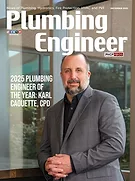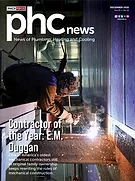The U.S. Chemical Safety Board confirmed that the vessel that launched into the Faultless Linen building in St. Louis on April 3 was a vertical condensate storage tank, technically referred to as the SCR or semi-closed receiver.
The SCR provided the condensate or hot water to a steam generation and supply system supporting the Loy-Lange Box Co.’s corrugated box manufacturing process. That process was being started up on the morning of the incident. Initial visual examination suggests that the bottom pressure boundary of the SCR failed.
According to initial calculations performed by CSB investigators, the SCR contained about 510 gallons of water and was operated at about 330 degrees F and 100 psig. The SCR itself is roughly 20 to 25 feet tall and about 3 feet in diameter and about 3,000 lbs.
When the vessel failed, the hot condensate jetted from the bottom, converting from hot water to steam. The power of the jet of water rapidly turning to steam broke the vessel loose from its piping attachments and fastenings, propelling it through the internal structure and roof of the building. The downward force of the steam launched the 3,000 pound vessel with a speed of about 120 mph, about 425 feet into the air and about 515 feet from its starting point. The SCR remained airborne for over 10 seconds.
The failure mode of the SCR is unknown at this early stage in the assessment, however, in cases of vessel failure it is typical for the CSB to examine issues of vessel operation, preventive maintenance and mechanical integrity.
Source: CSB





